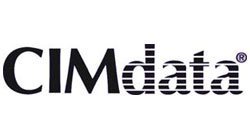This month there was a good article by CIMdata on the PLM/CAD community web sites titled “Open-Source and PLM Marketplace Maturity” which explains the benefits for companies and the implications for the PLM market that are resulting from the business model innovation inherent in open source.
It’s got some important information in it about the transformation going on in the PLM marketplace so I’ve included some excerpts along with related comments from my perspective.
State of the PLM Market
The status of how things are today in PLM is representative of the way other software markets have been for a decade or more.
It is an unmistakable sign of the maturing of any segment of the software industry when competition appears from open-source solution suppliers. Product lifecycle management (PLM) has “joined the club” both as an industry and as an enterprise-level strategy and information technology domain...
Proprietary and open source PLM are building solid track records and have much to offer potential users. As they compete, the ways that both business models develop will have a profound effect on PLM in coming years. The potential outcomes of this competition are many and varied, and should not be ignored by anyone using PLM, or still thinking it over... While this article is framing it as “proprietary vs open source”, from a business model perspective what we’re talking about is “Up-front Licenses+Maintenance vs Subscription”. We’re betting on a subscription-only format for PLM as opposed to the “gotta buy more licenses before you can use anything” approach.
PLM Market Implications
Price pressure is nothing new in software markets, but this time it’s more like a transformation in the packaging and licensing structure as opposed to purely cost-based pressure.
Open-source competition cuts both ways for the established developers of proprietary (or “closed”) platforms, applications, and systems. Open-source typically expands a market by prompting many companies to at last consider new types of software and the information-management strategy they support. However, open-source also creates pressure on software prices and packaging practices; users pay no traditional licensing fees, as they do with proprietary offerings...
Suppliers of proprietary PLM solutions are already responding to the no-license open-source structure by discounting license fees… This is absolutely the case and if your company is currently buying a PLM system and you are not getting quoted greater than 50% discount off list price for the up-front cost of PLM licenses, then your PLM sales rep is taking you for a ride and hoping you’ll purchase without asking questions.
How Packaging Has Changed and Future Opportunities for Innovation with the Cloud
This paragraph sums it up pretty well. There’s nothing crazy about what’s going on with open source packaging structures, they are just a transformation from the traditional all-or-nothing, pay-up-front software licensing model to a subscription-based format with innovation coming on the Cloud in the future.
There are a number of open-source business models. The most successful combine subscription-based support packages with training, consulting services, and the sale of add-on software modules, (e.g., complex integrations with engineering tools). Beyond this, open-source platforms and proprietary PLM solutions offer similar ranges of services including installation and implementation, training, support, patches, extensions, and upgrades…
This explains the answer to the fundamental question, “How do you make money?” At the most basic level all we’re doing is stripping away all the PLM license costs and offering optional enterprise subscription packages (i.e. like the ‘maintenance’ you’re forced to buy with any of the other major PLM systems).
Would also add that from a business model perspective at Aras we see tremendous potential for connecting to cloud based services, data and analytics similar to what Autodesk is doing with their cloud offerings. It’s the right approach, and we believe will be a substantial value-add for companies moving forward. For more on our perspective on this check out “Why the Networked Business will be Cloud Connected” and “THE REAL PROMISE OF THE CLOUD”.
Additional Industry-wide Context
These conditions are certainly not limited to PLM and are not only being driven by start-ups like Aras.
Open-source emerged in the software development world in the 1980s, and its pervasiveness has risen in sync with adoption of the Internet. Today, the major software suppliers such as IBM, Oracle and Citrix are leading the development and distribution of open-source products and then selling related offerings. The most widely known pure-play commercial supplier of open source software is Red Hat Inc. in Raleigh, N.C. Red Hat distributes and supports the Linux operating system and JBoss application server. Like Red Hat, Aras uses a subscription-based business model-often referred to as an enterprise open source model...
Open-source products span the software universe from infrastructure platforms and desktop applications at small companies to full-blown enterprise software systems at Fortune 500 corporations. As with proprietary products, the robustness of open-source software depends on the architecture and maturity of the solution. For example, Linux is widely recognized as enterprise-grade and capable of running the most demanding workloads... At the end of the day, just because a software package uses an open source format does not mean it’s good or it’s bad. It all comes down to architecture, quality and robustness – and that’s exactly where we/Aras compete (and win) against the major PLM systems on the market (AKA the “proprietary” PLM systems).
This brings up an important point. The fundamental premise of the article is that the emergence of open source offerings in a given software category is a sign of market maturity and “commoditization”. This implies that there is effectively no difference between one PLM system and another. In my opinion, this couldn’t be further from the truth.
What’s your take? Will PLM software just be a commodity where there’s no difference from system to system? Or are we really talking about innovative technology finding an innovative business model to accelerate adoption and ‘break the shackles’ of proprietary lock-in (both on your systems and your wallet)?

